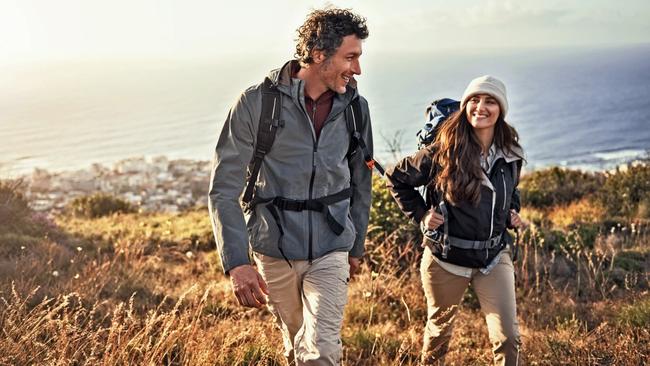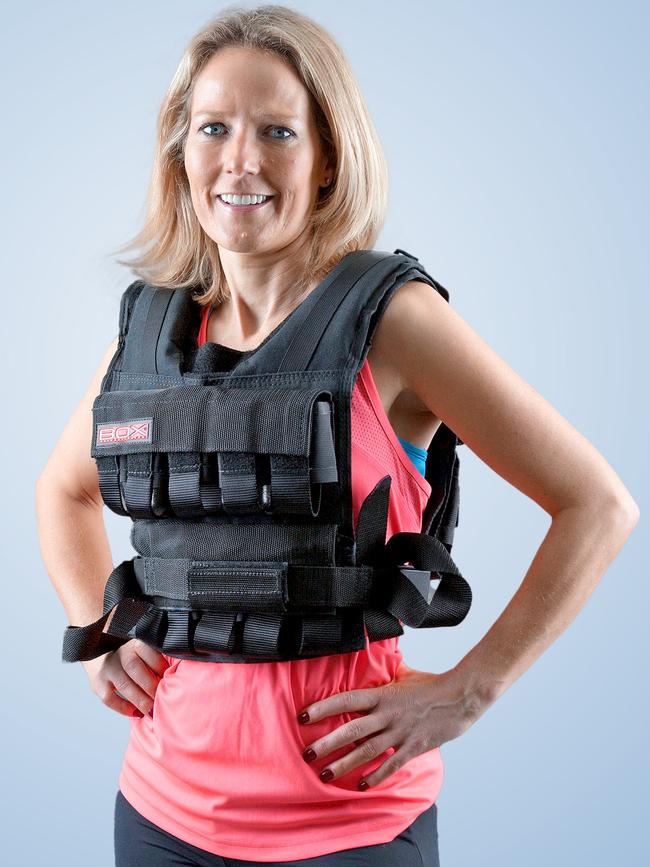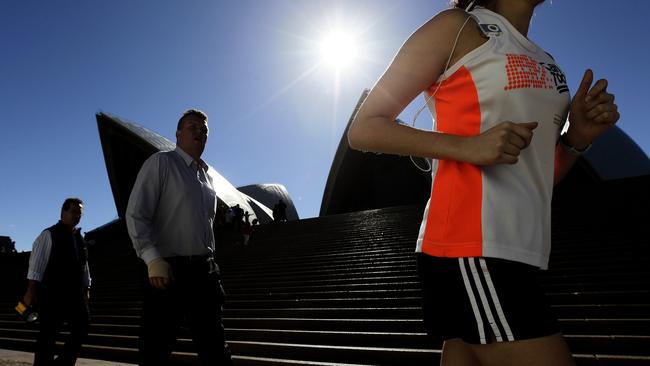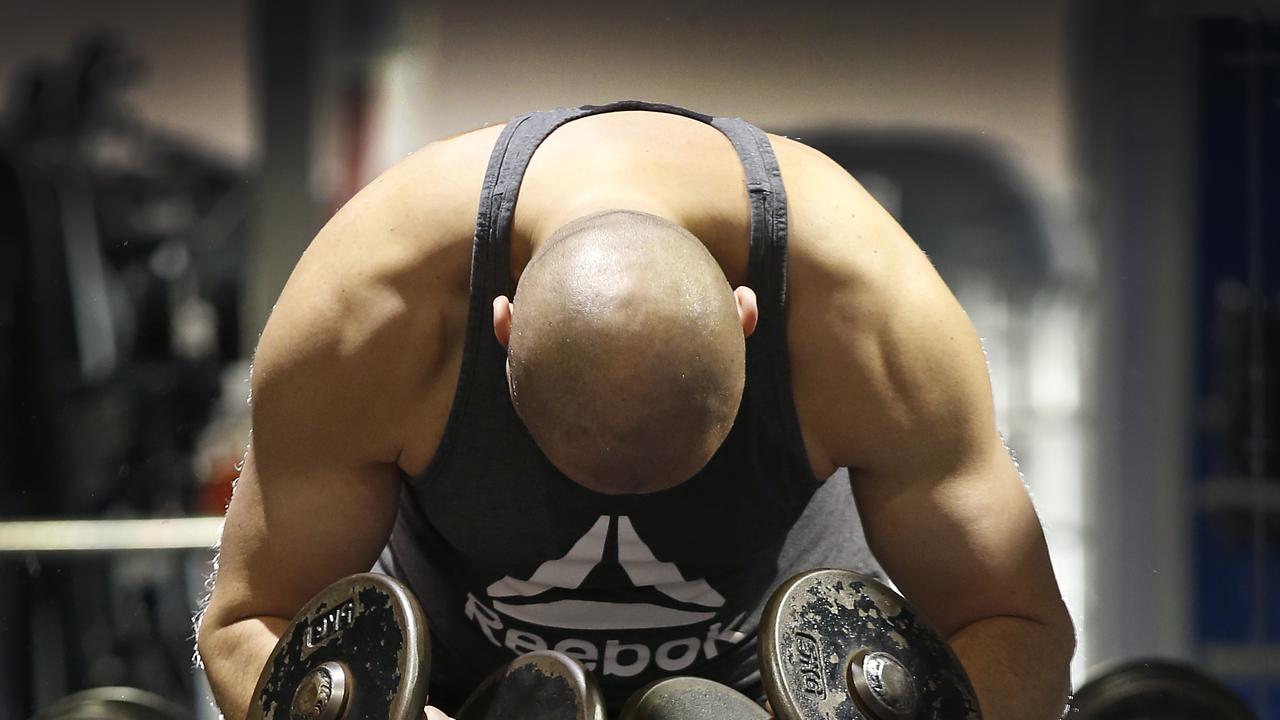Simple ways to make the most of walking, the perfect exercise
There’s no need to join a gym when walking is a great way to get fit for free. Try these simple techniques to optimise the benefits of your daily walk.

If someone were to come up with a safe, once-daily supplement that promises anti-ageing, disease-defying, stress-reducing and fitness-enhancing benefits – all for free – we would be queuing up to take it. Yet such a tonic already exists, in the form of a daily walk.
Scientists have discovered so many mind-body benefits to walking that were they able to bottle the effects of this most basic and instinctive form of exercise they would become billionaires several times over.
If there is one thing we should all be doing in 2024 to better our health it is walking with greater intent. Indeed, walk in the right way and it can blast anxiety, reduce back pain, strengthen muscles and bones, enhance flexibility and prolong your life.
It’s as effective as any gym class and it costs nothing beyond the investment of a good pair of walking shoes. “There is so much we can achieve by switching up our daily walk,” says Dalton Wong, the founder of TwentyTwo Training. “Even the tiniest tweaks and changes can bring about dramatic mental and physical boosts alongside more enjoyment of the activity.”
Here’s how to walk your way into better shape.
1. Try nasal breathing to release stress and enhance oxygen supplies as you walk
Nasal breathing – breathing through your nose rather than your mouth – is more than a TikTok sensation in which people tape their mouths when sleeping to facilitate the technique.
It could actually enhance your walking, Wong says. “I have been using nasal breathing on my daily walks as it really helps to enhance your cardiovascular exercise and it boosts levels of circulating oxygen.”
One study in the International Journal of Kinesiology and Sports Science looked at runners, who were invited to a lab for tests after practising nasal-only breathing for six months. Researchers at Colorado State University put them through treadmill-running tests and checked different exercise markers, once when they were mouth breathing and once when nasal breathing.
Results showed that the runners’ respiratory rates (the number of breaths taken per minute) and their ratio of oxygen intake to carbon dioxide output dropped when they breathed only though their noses. And the consensus was that their lower breath rate when nasal breathing allowed more time for oxygen to circulate in the bloodstream.
Take it from someone who has tried – it’s hard to nasal breathe when running without plenty of practice. But the lower intensity of walking provides the perfect opportunity to try it. A positive side-effect, says Wong, is that it might also help you to de-stress. “Nasal breathing forces you to breathe more deeply from your diaphragm, which is linked to stress reduction. And focusing on breath brings intent to your walking, which means you are less likely to dwell on negative thoughts.”

2. Walk in silence at least once a week to reconnect mind and body
Listening to music or a podcast when walking is a great way to multitask and to distract from how hard you are working. Costas Karageorghis, a professor in sport and exercise psychology and head of Brunel University London’s sound and vision innovations group, says that many of our body rhythms, including heart rate and brainwaves, lock into music in a positive way so that we sync our stride patterns with it when walking.
“Choose upbeat music with a consistent and steady beat and an obvious metre,” he says. “Your mind can extract the rhythmical content of the music so that you can then sync your stride rate with it on a power walk.”
It’s not for everyone (myself included), however, and even Karageorghis recommends doing at least one walk a week in silence. Music is so powerful, he says, that it has the potential to override stress reduction and an important mind-body connection.
“As a rule of thumb, use music for two sessions out of three and on other walks learn to listen to your body and to tune into your surroundings instead,” he says.
I can vouch for walking in silence – and that means no buzzing phone and no beeping tracker as well as no headphones – as among the best forms of morning meditation. Just as music helps to distract from your surroundings, so silence helps you to envelop yourself in them. “Take away technology and we are more present in the moment,” Wong says. “You are forced to tune in to trees and the sky, to your heart rate, your footfall, your breathing patterns and your emotions in the here and now.” Switch off once a week and see how silence benefits your state of mind.
3. Wear a weighted vest to strengthen muscles and bones
If you don’t spend much, or any, time lifting weights, one way to incorporate more resistance training is to wear a weighted vest when you walk.
I am a recent convert, having been recommended to try it by Gabrielle Lyon, a doctor in osteopathic medicine in the US and author of Forever Strong. She advocates wearing a weighted vest around the house and on walks to add muscle and bone-building resistance to daily activity. David Beckham and the Facebook founder Mark Zuckerberg have been spotted wearing them.

Wong is also a fan. “I wear a weighted vest at any opportunity when walking,” he says. “It’s more ergonomic and easier to wear than a heavy backpack.” His advice is not to start with weights that are too heavy, as a sudden excessive increase in load will put joints under unnecessary strain.
Wong suggests women start with 2-5kg and men with 5-10kg, but choose a vest that lets you add or remove weight as required. Mirafit does a good adjustable version with 1kg removable blocks. Benefits can be significant. A study in the journal Ergonomics showed that men who wore a 9kg weighted vest for a 10-minute uphill walk burnt 6 per cent more calories than without. “You will find that your heart rate rises too, which is a clear sign that your body is working harder,” Wong says.
5. Do intermittent power walking for an anti-ageing effect
It’s not how far you walk but how fast you do it that has the greatest impact on your health. Even intermittent bursts of speed can transform a walk into an unrivalled age-defying and health-boosting activity.
Using data from ten previous studies that tracked people’s walking speed and compared findings with records of diabetes diagnosis, researchers from Imperial College London, the Semnan University of Medical Sciences in Iran and Oslo New University College in Norway reported that the faster you walk, the lower the risk of type 2 diabetes.
The results of their investigation, published in the British Journal of Sports Medicine at the end of last year, showed that an average walking speed of 3-4.8km/h was associated with a 15 per cent lower risk of type 2 diabetes compared with a leisurely 3km/h, or about 60 steps per minute, regardless of distance covered.

Pick up to a fairly brisk walking pace of 5-6.5km/h, or 80-120 steps per minute, and it represented a 24 per cent drop in risk. Power-walking at a pace of 6.5km/h or faster (more than 120 steps per minute) was associated with a 39 per cent lower risk.
Others have found that brisk walkers have up to 20 years’ greater life expectancy than slow walkers and, in one study of 405,981 UK adults at the University of Leicester, faster walking was associated with slowing down biological ageing.
Their study focused on telomeres, the caps at the end of chromosomes that protect them from damage. As we get older, telomeres tend to shorten and their length is considered a strong indicator of biological age. The Leicester team reported in Communications Biology journal that a lifetime of brisk walking could result in someone retaining telomere length so that their biological age is the equivalent to being 16 years younger by middle age.
It’s not easy, or necessary, to pick up your pace overnight, and among the best ways to progress is to add intermittent bursts of walking at a faster speed. Think of it as interval training on your daily stroll.
Start with a 20-second burst at a fast pace followed by 40 seconds of slower walking for 5 minutes, building up to bursts of 60 seconds’ fast walking with 60 seconds’ recovery for 10 minutes.
“There are so many variations to add speed,” Wong says. “Try walking 10 minutes easy, 10 minutes medium and 10 minutes faster, extending the faster-paced sections as you get fitter.”
6. Try walking backwards to work your hamstrings and challenge your brain
Walking even a few steps in reverse is trickier than it sounds. Backward walking tests your spatial awareness, balance and different muscles to forward walking, which are reasons enough to try it. It takes some getting used to, but there is plenty of evidence it is beneficial.

“It’s something that is widely prescribed by physiotherapists for people with painful knees, osteoarthritis in the knee or for rehabilitation from knee injuries,” says the physiotherapist Paul Hobrough. “This is because the knee is under a reduced range of motion when walking backwards so there is less strain on the joint.”
Footballers and tennis players include elements of backward movement in their training, and researchers at the University of Nevada, who have been studying backward locomotion for decades, have shown that it also works muscles in different ways to going forwards.
In one of their trials, published in the International Journal of Exercise Science, the team showed that just 10 minutes a day of backward walking increased flexibility in the hamstrings, the muscles in the backs of the legs that get tight from too much sitting.
Postural muscles in the back and trunk are also strengthened when you walk in reverse, they reported in the Journal of Chiropractic Medicine, with evidence that it can help to relieve low-back pain.
Hobrough suggests trying it on a treadmill first.
“It’s much easier to control the pace on a treadmill and you don’t have to twist to look out for obstacles,” he says. “Just 3-5 minutes at a time is enough to start getting used to it.”
If you try outside, be careful to practise on soft, open ground and initially stick to short distances of 20-30m at the end of a walk.
The Times







To join the conversation, please log in. Don't have an account? Register
Join the conversation, you are commenting as Logout